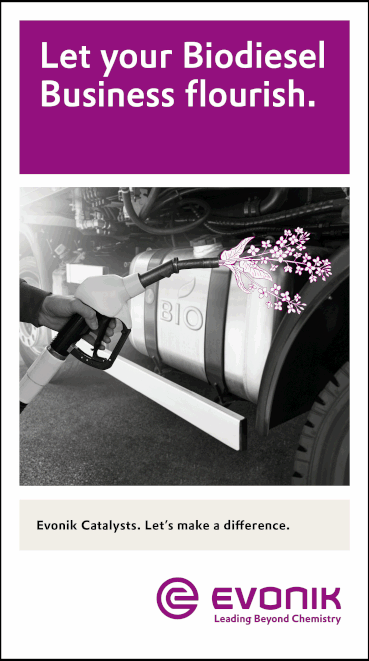New biodiesel catalyst mimics how enzymes coordinate complex chemical reactions in human cells
- Ron Kotrba

- Oct 27, 2020
- 2 min read
Researchers at RMIT University in Melbourne, Australia, have developed a new catalyst for biodiesel production that scientists working on the project say can efficiently convert highly contaminated used cooking oil (UCO) into biodiesel.

To make the new catalyst, the team at RMIT University fabricated a highly porous, micron-sized ceramic sponge with different, specialized active components. Molecules enter the sponge, which is 100 times thinner than a human hair, through larger and then smaller pores for two separate chemical reactions.
The university says this is the first time a multifunctional catalyst has been developed that can perform several chemical reactions in sequence within a single catalyst particle.
The new catalyst design mimics the way enzymes in human cells coordinate complex chemical reactions, according to RMIT University Prof. Karen Wilson, a co-lead investigator on the project.
"Catalysts have previously been developed that can perform multiple simultaneous reactions, but these approaches offer little control over the chemistry and tend to be inefficient and unpredictable," Wilson said. "Our bio-inspired approach looks to nature's catalysts―enzymes―to develop a powerful and precise way of performing multiple reactions in a set sequence. It's like having a nanoscale production line for chemical reactions―all housed in one, tiny and super-efficient catalyst particle."
The new catalysts use no precious metals and are cheap to manufacture, according to the university, and their development bodes well for small-scale, distributed production of biodiesel from low-quality waste oil containing up to 50 percent contaminants.
"Making low-carbon biodiesel from agricultural waste with these catalysts requires little more than a large container, some gentle heating and stirring," RMIT University stated. "It's a low-technology, low-cost approach that could advance distributed biofuel production and reduce reliance on fossil fuel-derived diesel."
Wilson said this is particularly important in developing countries where diesel is the primary fuel for powering household electricity generators.
"If we could empower farmers to produce biodiesel directly from agricultural waste like rice bran, cashew nut and castor seed shells, on their own land, this would help address the critical issues of energy poverty and carbon emissions," she said.
With further development, the catalysts could be tailored to produce sustainable aviation fuel from agricultural and forestry waste, old rubber tires, and even algae, according to RMIT University. The next steps for the RMIT School of Science research team, however, are 1) to scale up catalyst manufacturing from grams to kilograms; and 2) to adopt 3-D printing technologies to speed up commercialization.


































